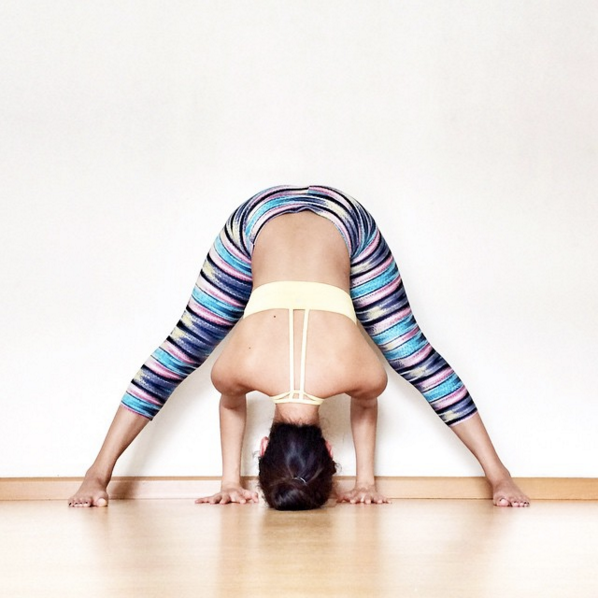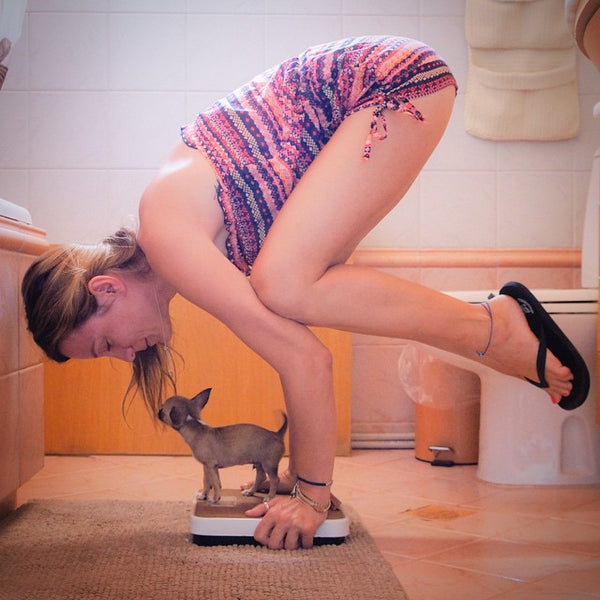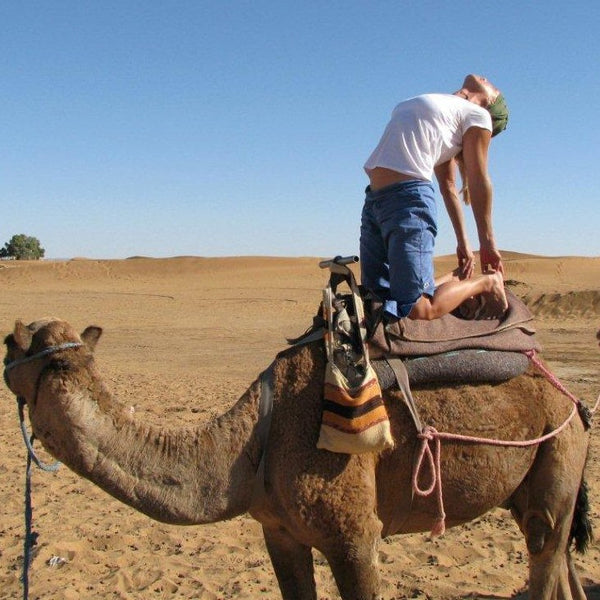Padmasana: 7 Tips to get into Lotus Pose
Lotus pose, or Padmasana, is pretty much the staple pose of yoga as a whole.
(Image via @keytraining)
"The Lotus position is adopted to allow the body to be held completely steady for long periods of time. This allows the mind to calm—the first step towards meditation. The asana applies pressure to the lower spine which may facilitate relaxation. The breath can slow down, muscular tension decrease and blood pressure subside. The coccygeal and sacral nerves are toned as the normally large blood flow to the legs is redirected to the abdominal region, which may help to improve digestion." - Wikipedia
Padmasana or Lotus Pose is one of the oldest known yoga poses and its main purpose is to be able to get you to sit still and meditate which after all, is the actual, historical, original, initial goal of yoga.

(Image via @michelleshea)
The lotus is an absolute graceful, beautiful flower but for those struggling with their Lotus Pose, it can feel anything but! We had a bit of a debate here at Lots of Yoga during a staff meeting when we were asked to mention a fairly easy yoga pose and someone piped up, "lotus!" to the shock and horror of most of the team. Lotus is by no means easy unless you were born with bendy bones and dislocated knees. Take for example this lovely, flexible yogi below.
(Image via @sofiayoga)
Mysore trained Ashtangi, Sofia Xirotiri was a gymnast from the tender age of 7 and yet tells Lots of Yoga that Lotus Pose was one of the hardest poses for her and took her over two years to master.
"I had great difficulty in the beginning... especially with my lotus, and some think that’s a pretty basic pose. I may have been flexible and strong but I couldn’t get into Lotus no matter how hard I tried. My legs would just not go into it." (You can read the full interview here.) Contrary to some common yoga poses that look much harder than they actually are, Lotus is a pose that looks much easier than it is. You will be doing yourself a massive favour if you stop looking at others in the class who perform a perfect Lotus and stop worrying that there's something wrong with you.
The most important thing is to look after the knees and make sure you are not in any pain. Being able to differentiate pain and discomfort is vital in all forms of exercise. Discomfort is normal whereas pain is your body's way of telling you that something is not right and pain in the knees is something to be extra careful with. Some teachers may tell you that if you can do Lotus but your knees are off the floor, then this pose isn't for you but here at Lots of Yoga we believe that everything is possible... with a little help. With these 7 tips below, you'll be sure to learn to love your Lotus.
7 Tips to Get You Into Lotus Pose
1. Advice from the Pros!
How was Sofia Xirotiri eventually able to get into Lotus Pose? "I got the best advice for Lotus pose from Tim Feldmann," she tells us. Tim Feldmann is a Mysore authorised Ashtanga yoga teacher and the director and founder of the Miami Life Center, along with his wife Kino MacGregor. (They're also totally in love, by the way.)
(Image via @kinoyoga)
"Tim told me to sit for 5 minutes every day with one leg above the other, in parallel so that one foot is on the opposite knee, and then alternate legs," Sofia says.

Prep for Lotus Pose by sitting with the knee on top of opposite foot (or as far as the knee will go) for 5 minutes (each side) every day
"I did this every night before I went to sleep," she continues. "I would time myself. At first, those 5 minutes seemed like an hour but then after a while, I got used to it. In the beginning, my foot was half a foot off my knee. I just couldn’t do it. But I persisted with Tim's advice. It took me over the course of two years to get the knee lower and lower and now I sit here like that just for fun! The same exercise can be used for any legs-behind-the-head pose. Also, whenever possible, sit on the floor. That’s how they do it in India; they are so used to sitting on the floor and this opens up the ischium." We will certainly be trying that!
2. Prop Yourself.
Shove blocks, cushions, or anything you can get your hands on, under your knees to relieve some of the pressure. Remember, when it comes to props, we use them to lose them and there's absolutely nothing wrong with having as many as you need; stop being so hard on yourself! It's still yoga even if we use props!

(Image via yogamartusa.com)
3. Half Time.
Only hold the pose for half of the required breathing time to begin with until you start to get more comfortable in the pose.
4. Half Lotus.
When the yoga instructor tells the class to get into full lotus, do a half lotus (or wherever you can get your one foot to go) for half of the breaths and then alternate to the other leg for the remaining breaths.
(Image via @saralucywilby)
5. Lean back!
Lotus sometimes seems harder because we are leaning forward and that can hurt like a b****! Lean back, either on your hands or elbows while in half Lotus for five breathes, then alternate to the other leg.6. Open Those Hips.
If Padmasana is the pose you are most dying to get into, modify your yoga class to work on opening your hips. For example, when the instructor tells you to get into Janu Sirsasana (head-to-knee) forward bend, try lifting the foot either into half lotus, or place it on your thigh or even just above the knee, to get an extra stretch. This way you are getting the benefit of Janu and also preparing for Lotus at the same time. The same goes for Vrksasana (Tree Pose). Remember to use blocks under the bent knee if in any pain or if the knee is lifted off the ground.

7. Why Can She Do it and I Can't?
Finally, stop comparing yourself to others. This can be true of any yoga pose but especially in Lotus because it is one of these poses that either comes extremely easy to some or is like shoving hot irons through the knees for others. Everyone has their own journey with yoga so just concentrate on yourself and on your own story. The age-old adage "practice makes perfect" is also true of Padmasana but remember, it's not the destination but the journey that is all the fun so wherever you are with your Lotus, make sure you enjoy it!
Follow us for more free, high-quality yoga and mindfulness content... and subscribe to our mailing list below!
Don't forget to connect with us on social media (Facebook, Twitter, Instagram, Pinterest and Tumblr).Also in Yoga Poses







